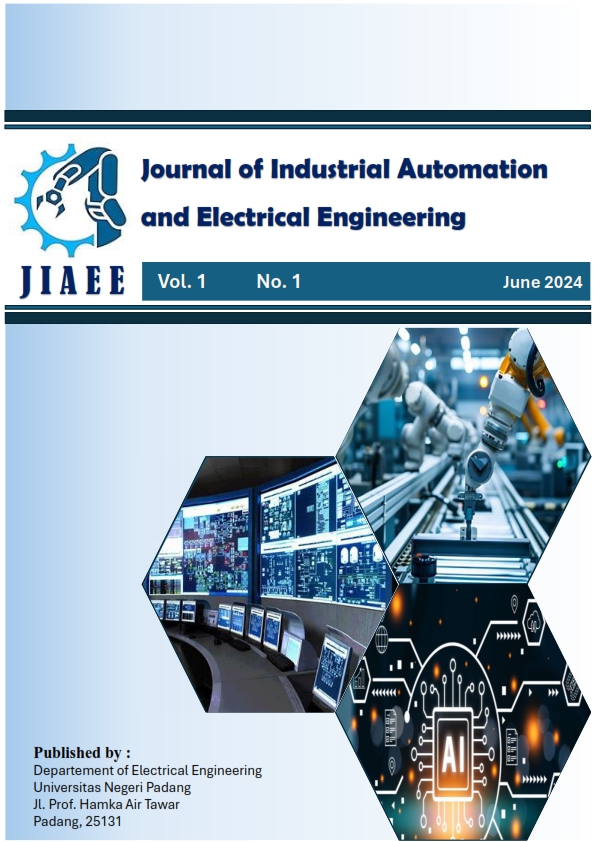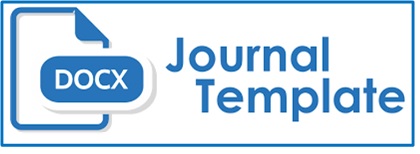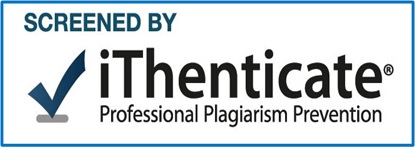Realization of Single Phase Full Bridge Boost Inverter Using Arduino
Keywords:
Boost Inverter, inverter, SPWM, Arduino, Boost converterAbstract
This paper discusses a single-phase boost inverter that functions to increase and convert DC voltage to AC. A boost inverter is a combination of two DC-DC boost converters that can be operated as an inverter with a load connected in an opposite direction between the two converters. The boost inverter in this final project is implemented with an Arduino UNO328 microcontroller using the sinusoidal pulse width method (SPWM) as a trigger. The output frequency value given varies from 50Hz to 70Hz. In the design of this single-phase boost inverter, it consists of several main components, namely the Arduino microcontroller, which functions as a pulse width modulation signal generator; a MOSFET gate driver using the IR2841S IC functions to switch the IRFP260N MOSFET, where the MOSFET is switched with a constant frequency of 30 kHz and a 5V power supply as a voltage supply for Arduino and a 12V supply voltage for the gate driver; as well as capacitors and inductors. The test results in the design of this single-phase boost inverter run according to the design because the circuit has been able to increase and convert the voltage, namely from an input voltage of 12VDC to 31.59Vac with an output frequency of 50Hz. The selection of component quality in the circuit also affects getting more accurate results
Downloads
References
[1] O. J. Moraka, P. S. Barendse and M. A. Khan,” Dead time effect on the double loop control strategy for a boost inverter,” IEEE Transactions on Industry Applications, vol. 53, pp. 319-326, January 2017
[2] G. Ramya, V. Ganapathy, and P. Suresh, “Comprehensive analysis of interleaved boost converter with simplified H-bridge multilevel inverter based static synchronous compensator system,” Electric Power Systems Research, vol. 176, no. December 2018, p. 105936, 2019, doi: 10.1016/j.epsr.2019.105936
[3] R. J. Wai, Y. F. Lin and Y. K. Liu,” Design of adaptive fuzzy-neural-network control for single-stage boost inverter,” IEEE Transactions on Power Electronics, vol. 30, pp. 7282-7298, December 2015
[4] J. Linares-Flores, J. F. Guerrero-Castellanos, R. Lescas-Hernández, A. Hernández-Méndez, and R. Vázquez-Perales, “Angular speed control of an induction motor via a solar powered boost converter-voltage source inverter combination,” Energy, vol. 166, pp. 326–334, 2019, doi: 10.1016/j.energy.2018.10.024.
[5] M. Yuhendri, Aslimeri and M. Muskhir, "Optimum Torque Control of Stand Alone Wind Turbine Generator System Fed Single Phase Boost Inverter," 2018 2nd International Conference on Electrical Engineering and Informatics (ICon EEI), Batam, Indonesia, 2018, pp. 148-153, doi: 10.1109/ICon-EEI.2018.8784319.
[6] A. Chaurasia and A. Hota, "A Novel Switched Capacitor 4-level Single-Phase Inverter with Voltage Boosting and Common Ground," 2020 IEEE International Conference on Power Electronics, Drives and Energy Systems (PEDES), Jaipur, India, 2020, pp. 1-4, doi: 10.1109/PEDES49360.2020.9379750
[7] T. Tran, M. Nguyen, T. Duong, J. Choi, Y. Lim and F. Zare, "A Switched-Capacitor-Voltage-Doubler Based Boost Inverter for Common-Mode Voltage Reduction", IEEE Access, vol. 7, pp. 98618-98629, 2019.
[8] M. Chen, C. Yin, C. Gao and P. C. Loh, "Cascaded H-Bridge and T-Type Seven-Level Inverter Fed by the Inductive DC-Link with Embedded Voltage Boosting," 2021 IEEE 1st International Power Electronics and Application Symposium (PEAS), Shanghai, China, 2021, pp. 1-7, doi: 10.1109/PEAS53589.2021.9628687.
[9] A. Ravindranath, S. K. Mishra and A. Joshi, "Analysis and PWM Control of Switched Boost Inverter," IEEE Transactions on Industrial Electronics, vol. 60, no. 12, pp. 5593-5602, Dec. 2013, doi: 10.1109/TIE.2012.2230595.
[10] C. Albea-Sanchez and G. Garcia, “Robust hybrid control law for a boost inverter,” Control Engineering Practice, vol. 101, no. May, p. 104492, 2020, doi: 10.1016/j.conengprac.2020.104492
[11] A. Srivastava and J. Seshadrinath, "A Single-Phase Seven-Level Triple Boost Inverter for Grid-Connected Transformerless PV Applications," IEEE Transactions on Industrial Electronics, vol. 70, no. 9, pp. 9004-9015, Sept. 2023, doi: 10.1109/TIE.2022.3215815.
[12] M. Jagabar Sathik, N. Sandeep, D. Almakhles, K. Bhatnagar, Y. Yang and F. Blaabjerg, "Seven-level boosting active neutral point clamped inverter using cross-connected switched capacitor cells", IET Power Electronic, vol. 13, no. 9, pp. 1919-1924, Jul. 2020.
[13] M. J. Sathik, N. Sandeep, M. D. Siddique, D. Almakhles and S. Mekhilef, "Compact seven-level boost type inverter topology", IEEE Trans. Circuits Syst. II Express Briefs, vol. 68, no. 4, pp. 1358-1362, Apr. 2021.
[14] H. A. Mosalam, R. A. Amer, and G. A. Morsy, “Fuzzy logic control for a grid-connected PV array through Z-source-inverter using maximum constant boost control method,” Ain Shams Engineering Journal, vol. 9, no. 4, pp. 2931–2941, 2018, doi: 10.1016/j.asej.2018.10.001.
[15] D. Ghaderi, S. Padmanaban, P. K. Maroti, B. Papari, and J. B. Holm-Nielsen, “Design and implementation of an improved sinusoidal controller for a two-phase enhanced impedance source boost inverter,” Computers and Electrical Engineering, vol. 83, p. 106575, 2020, doi: 10.1016/j.compeleceng.2020.106575.
[16] P. Sanchis, A. Ursæa, E. Gubía and L. Marroyo, “Boost DC–AC inverter: a new control strategy,” IEEE Transactions on Power Electronics, vol. 20, pp. 343-353, March 2005.
[17] V. -T. Tran, M. -K. Nguyen, D. -T. Do and C. Wang, "Single-Phase Five-Level Quasi-Switched Boost T-Type Inverter," 2021 IEEE Transportation Electrification Conference & Expo (ITEC), Chicago, IL, USA, 2021, pp. 856-860, doi: 10.1109/ITEC51675.2021.9490154.
[18] M. D. Siddique et al., “A new configurable switched-capacitor based boost inverter with reduced component count for renewable energy applications,” e-Prime - Advances in Electrical Engineering, Electronics and Energy, vol. 9, no. April, p. 100626, 2024, doi: 10.1016/j.prime.2024.100626.
[19] C. Bharatiraja, A. Ravi, S. Banerjee, A. Chakraborty, A. Anupam, and A. Menon, “A Hybrid Cascaded Multilevel Inverter with Diode Assisted Boosting Network,” Energy Procedia, vol. 117, pp. 1024–1031, 2017, doi: 10.1016/j.egypro.2017.05.224.
[20] P. Ponnambalam, K. Muralikumar, P. Vasundhara, S. Sreejith, and B. Challa, “Fuzzy Controlled Switched Capacitor Boost Inverter,” Energy Procedia, vol. 117, pp. 909–916, 2017, doi: 10.1016/j.egypro.2017.05.210.
[21] A. Abramovitz, B. Zhao and K. Smedley,” High-gain single-stage boosting inverter for photovoltaic applications,” IEEE Transactions on Power Electronics, vol. 31, pp. 3550-3558, May 2016.
[22] M. Ali, M. Tayyab, A. Sarwar, M. A. Abido, and M. Khalid, “Standalone and grid-connected operation of single-source multilevel inverter with boosted output voltage,” Alexandria Engineering Journal, vol. 103, no. April, pp. 278–287, 2024, doi: 10.1016/j.aej.2024.06.019.
[23] G. Revana and V. R. Kota, “Simulation and implementation of resonant controller based PV fed cascaded boost-converter three phase five-level inverter system,” Journal of King Saud University – Engineering Sciences, vol. 32, no. 7, pp. 411–424, 2020, doi: 10.1016/j.jksues.2019.04.002.
[24] S. M. Dabour, A. A. Aboushady, I. A. Gowaid, M. A. Elgenedy and M. E. Farrag, "Analysis and Control of Simplified Dual-Output Single-Phase Split-Source Boost Inverters," 2022 23rd International Middle East Power Systems Conference (MEPCON), Cairo, Egypt, 2022, pp. 1-5, doi: 10.1109/MEPCON55441.2022.10021748.
[25] W. Wu, J. Ji and F. Blaabjerg, "Aalborg Inverter - A New Type of “Buck in Buck, Boost in Boost” Grid-Tied Inverter," IEEE Transactions on Power Electronics, vol. 30, no. 9, pp. 4784-4793, Sept. 2015, doi: 10.1109/TPEL.2014.2363566.
[26] M. Padri and M. Yuhendri, “Inverter 3 Fasa Menggunakan Metoda Space Vector Pulse Width Modulation ( SVPWM ),” JTEIN: Jurnal Teknik Elektro Indonesia, vol. 2, no. 2, pp. 190–197, 2021.
[27] T. Y. Putra and M. Yuhendri, “Implementasi Hysterisis Current Control Pulse Witdh Modulation ( HCCPWM ) untuk Inverter 3 Fasa,” JTEIN: Jurnal Teknik Elektro Indonesia, vol. 2, no. 1, pp. 91–97, 2020.







